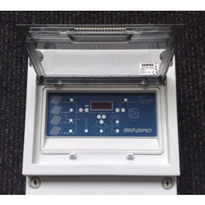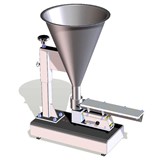This 'how-to' guide will help you establish your hourly rates based on actual costs.
To estimate and track project budgets you need to decide what hourly or daily rates to use. These are used not just for time-based quotes but are important as a verification guide for Percentage Based or Fixed Fee estimates as discussed in our earlier article 'Estimating fees: basic rules for avoiding costly oversights'.
Most architects plan and track projects using two rates:
- Cost Rate derived from salary plus overheads;
- Charge Rate or Billing Rate used for invoicing.
Cost Rate is best defined for each staff member since the rate can change at any time during the project due to pay rises (and cuts) and promotions, either temporary (such as when in a higher role) or permanent.
Charge Rate can be defined for each staff member or for each Role and can vary from project to project depending on building location, staff location, building type (commercial/retail etc), the client or from year to year. It may contractually stay the same for the life of the project or go up each year for example by CPI (consumer price index).
Cost Rate Calculation
First a few definitions:
Annual staff salary is the staff member's gross salary or equivalent plus any annual bonus plus superannuation;
Staff overhead pa is the total Overheads per annum divided by the total number of FTE (average full time equivalent) staff in that year, where Overheads include rent or equivalent, other building costs, insurances, computers, software, furniture, office materials, petty cash, parties, cleaners and maintenance costs etc. and are assumed to be averaged equally across all Staff;
Productive Hours pa refers to the number of actual hours worked per annum. For example there are 52 weeks a year minus 8 weeks of annual leave, statuary and sick days = 44 weeks. Then for example multiply by 37.5 hours per week and you get 1650 productive hours. (You may like to choose slightly different values such as 35 productive hours a week.)
A rough calculation for the Cost Rate per hour for each staff member could then be as follows:
Cost Rate ph= (Annual staff salary + Staff overhead pa) / Productive Hours pa
Charge Rate Calculation
The Charge Rate of each staff member doing billable work needs to also cover for all non billing staff.
Consider these some definitions:
Staff Cost is Annual salary + Staff overhead (see above);
Support Staff Cost is the sum of Staff Costs for all non-billable staff;
Billable Staff Cost is the sum of Staff Costs for all staff doing billable work Note 1;
Contribution is an adjustment to cover support staff, calculated as:
Support Staff Cost * (ratio of) Staff Cost / Billable Staff Cost Note 2;
Staff Margin % includes risk, contingency and profit Note 3, for example 150%.
A rough calculation for the Charge Rate per hour for each staff member could then be as follows:
Charge Rate ph = (Cost Rate ph + Contribution) * Staff Margin %
Now, providing that all your fixed price, percentage based and time based estimates use these charge rates when doing hourly resource based estimates and verifications, you should be covering all your costs and making a profit included in the Staff Margin % above.
Note 1 – You could take this further in a spreadsheet and derive %billable for each staff member.
Note 2 – The denominator is only the Billable Staff Cost and not the Total Staff Cost since Charge Rate is effectively zero for the
Support staff if not billing their time.
Note 3 – And more overheads if you wish but note overheads have already been included in the calculation of the Cost Rate.
Role-based Charge Rates
Many architect firms estimate projects using Roles and define Role-based Charge Rates rather than rates for specific staff members, in which case you can adjust the above calculations by replacing Staff with Role throughout Note 4 – The advantages of using Role-based Charge Rates are:
- You can appear bigger than you are (a sole practitioner can wear many hats!);
- You can change just one rate to affect all staff with that role;
- Invoices can show charge per role without having to mention staff names;
- Staff turnover and positions are hidden from the client.
Note 4. Remember to include all salaries of staff with each Role, and dividing the Overheads by number of Roles.
Some firms use Role-based Charge Rates for costs but this is not as accurate and not advised unless for convenience or security reasons.






















